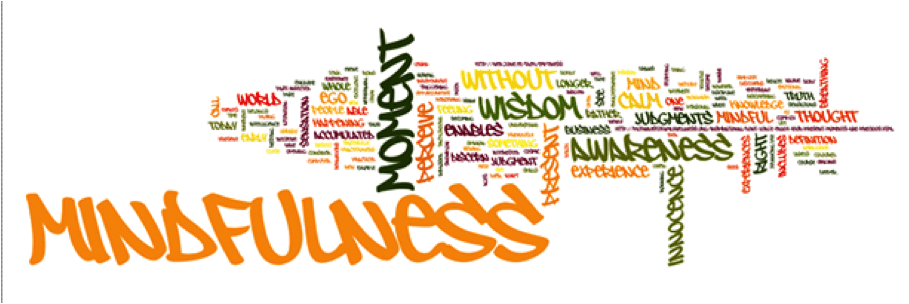 Wayne Dyer referred to mindfulness as paying attention to “what’s happening right here and right now, independent of my opinion about it.” Many refer to this as present moment awareness. In today’s business jargon, mindful people are those who have excellent “in the moment” social, cultural and emotional skills.
Wayne Dyer referred to mindfulness as paying attention to “what’s happening right here and right now, independent of my opinion about it.” Many refer to this as present moment awareness. In today’s business jargon, mindful people are those who have excellent “in the moment” social, cultural and emotional skills.
Whatever the present moment contains, accept it as if you had
chosen it. Always work with it, not against it. Eckhart Tolle
Given that mindfulness is the act of being aware in the present moment, most might consider themselves mindful. For example, I can hear the grass mower outside my window as well as my computer processor running in the background while I write. However, mindfulness runs much deeper than only what we perceive with our senses. It includes a “calm awareness” of one’s bodily sensations, feelings, thoughts and conditioned behaviours. It is this calm awareness, no matter what is occurring, that enables us to discern truth (what is really happening) and thus take the right course of action.
Being able to discern truth without it being coloured by our interpretations and assumptions requires us to set aside our ego and view reality without judgment. When we perceive something through our ego, we compare it with our past experience and knowledge. Our mind then labels the person, event or thing as pleasant or painful — judgments. When we perceive something through our innocence, that calm awareness, we see it truthfully, as though for the first time every time and without judgment.
When we view the present moment through such innocence, we see with curiosity and interest and lean into whatever the sensation, feeling, thought or behaviour is. From this place of non-judgment, we draw the sensation close and discover what it is through the experience of it rather than the idea of it. History is bypassed because we are not viewing through thought but rather, newly experiencing each moment without judgment.
The reason educators and business owners are interested in mindfulness has everything to do with experiential learning, which is all about wisdom. Perceiving life through childlike innocence (calm awareness) rather than past-infected ego enables us to be wise in the moment. In other words, we open our intuitive channels to receive from the annals of the cosmic library; the accumulated wisdom across the ages. Present moment awareness—a wisdom building process—gives us the insights we need to understand and adapt to the previously unknown. In a world where solutions for yesterday’s problems no longer apply to today’s experiences, mindfulness enables us to perceive and experience our New Normal world without judgments such as volatile, uncertain, complex and ambiguous. Thus, instead of triggering fear and withdrawal, we stay open to these new opportunities and emerging experiences meant to help us heal, learn and grow.
As far as age is concerned, it is never too early to begin training one’s mind and body to be present in the moment. Meditation is a tried and true means for mindfulness training. And by the way, children are natural meditators. No doubt you have already noticed how focused their minds are in play or whenever they are doing something they enjoy. And what is meditation but an opportunity to quiet the mind by training it to focus on a single point—the breath, a mantra or chant, a body part, a burning flame, etc. Below is a 10-minute mindful meditation practice, which will benefit you personally as well as the children in your care.
Find a comfortable position, seated or lying down. Uncross your arms, legs, hands and
feet so the blood, oxygen and energy within can flow freely. Close your eyes and take your
attention to the tips of your nostrils. Notice your next inhaled breath. Become aware of its
sensation as it enters your nostrils. Is it cool or warm? Where does the inhaled breath travel
to in your body? Now notice your exhaled breath. Is it cool or warm? Does your chest rise
and fall with the breath? What other parts of your body move to allow the breath space?
Use your inner awareness to sense and feel the breath travelling through your body. Over
time and with practice, your sensitivity will improve to the point where you can feel the
breath travel all the way into your fingers and toes.
For more mindful meditations narrated by Helen, click here.
